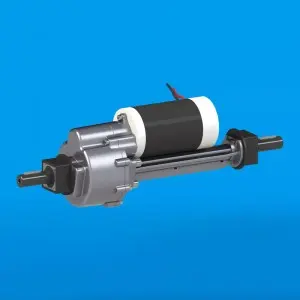Transaxle pulleys are an important part of your vehicle’s drivetrain, and replacing them may be a necessary task for maintenance or performance upgrades. The transaxle pulley is responsible for transferring power from the engine to the wheels and plays a vital role in determining the speed and performance of your vehicle. Replacing a transaxle pulley can be a complicated process, but with the right tools and knowledge, it can be done efficiently. In this article, we will discuss the importance of the transaxle pulley, the reasons for replacing it, and the steps involved in the process.
The transaxle pulley is a critical component of the vehicle’s drivetrain. It is connected to the engine’s crankshaft and is responsible for transmitting power to the wheels through the transaxle. The size and design of the pulley can have a significant impact on the performance of the vehicle as it determines the gear ratio and how fast the wheels turn. In some cases, the transaxle pulley may need to be replaced to improve the vehicle’s acceleration, top speed, or fuel efficiency.
There are several reasons why a car owner might consider replacing the transaxle pulley. A common reason is to improve vehicle performance. By installing a larger or smaller pulley, the gear ratio can be adjusted to increase acceleration or top speed. This is particularly beneficial for vehicles used in racing or high-performance applications. In addition, pulley replacement may also be required for maintenance purposes, such as replacing a worn or damaged pulley.
Before replacing the transaxle pulley, it is important to gather the necessary tools and materials. This may include pulley pullers, torque wrenches, and pulley replacements. It is also important to consult your vehicle’s service manual or seek professional advice to ensure you select the correct pulley for your specific make and model of vehicle. Additionally, it is important to ensure that the vehicle is safely supported and that all necessary safety precautions are taken before starting the process.
The first step in replacing the transaxle pulley is to disconnect the vehicle’s battery to prevent any electrical mishaps. Next, the vehicle should be raised and firmly supported to provide easy access to the transaxle pulley. The drive belt or serpentine belt connecting the pulley to the engine should be removed, and any other parts that obstruct access to the pulley should be removed.
Once you have access to the pulley, use a pulley puller to remove the old pulley from the transaxle. The puller is attached to the pulley and tightened to apply pressure to pull the pulley away from the transaxle. Be sure to follow the pulley puller manufacturer’s instructions to ensure safe removal of the pulley without damaging the transaxle or surrounding components.
Once the old pulley is removed, the replacement pulley can be installed. It is important to ensure that the new pulley is sized and designed for the vehicle’s specific application. The pulley should be carefully aligned and pressed onto the transaxle, making sure it is securely seated and properly aligned with the drive belt. Once the new pulley is in place, the drive belt or serpentine belt can be reinstalled, and any other components that were removed can be reinstalled.
Finally, the vehicle’s battery can be reconnected and the vehicle can be lowered from the stand. It is important to carefully inspect the new pulley and surrounding components to make sure everything is installed and aligned correctly. Also, it’s important to start the vehicle and test the new pulley to make sure it’s working properly and has no unusual noise or vibration.
In summary, replacing the transaxle pulley may be a necessary task to improve vehicle performance or for maintenance purposes. Before starting the process, it’s important to gather the necessary tools and materials, consult your vehicle’s service manual, and take all necessary safety precautions. By following the steps outlined in this article, vehicle owners can effectively replace the transaxle pulley and enjoy the benefits of improved performance and reliability.
Post time: May-24-2024


